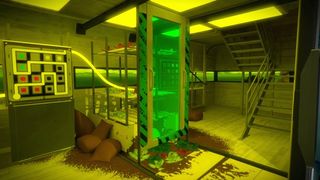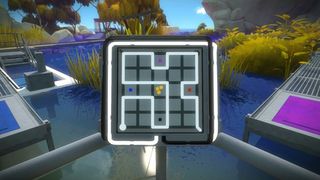

Witness is an exceptional fighter, typically performing best at close range, but this can change drastically depending on his chosen upgrades. His weapon is a ukulele with electric properties. He also shows two grey wires are on his shoulder. The Witness appears as a white and grey humanoid with red eyes and some red wires. He is mainly a wild card and is generally an all-rounder on the battlefield, with a mix of range and its versatility from obtainable moves, though he is initially a defense-focused melee attacker. "Maybe we're finally getting to see a little bit of what the world looked like before we eliminated most of the large animals that swim in the sea," Pitman tells Live Science.The Witness is unlocked after completing Downcast Days. Now that blue whale numbers are increasing, so could the instances of attacks on the species, Rachael Lallensack reported for Smithsonian in 2018. The species was pushed to the edge of extinction by commercial whaling in the 1900s, and they are classified as endangered by International Union for Conservation of Nature. One reason that no one has ever seen orcas feeding on a blue whale may be because blue whales are still rare. All three events happened along the continental shelf drop-off where migrating blue whales pass by a huge population of orcas. After that, the orcas jumped onto the whale's blowhole to exhaust the animal and prevent it from breathing. In each case, the pod of orcas would unleash a coordinated attack that included grabbing onto the whale’s fins, flippers, and tail to slow it down. The third attack happened two years later in March 2021, when orcas charged a 46-foot-long whale. This time, the orcas chose a smaller blue whale, perhaps a juvenile, roughly twice their length. The second attack happened less than a month later and was just 15 miles from the first site. “After the whale carcass sunk, about 50 killer whales were in the area feasting and sharing around the blue’s flesh.” “Close to the end, a female animal lunged head first into the blue’s mouth, presumably to feed on the tongue,” Totterdell explains in a statement. The blue whale’s skull was showing and its dorsal fin was missing. “Upon approach, we were astounded at what we were seeing,” says study author Rebecca Wellard, a Flinders University researcher and founder of Project ORCA, to Annie Roth for the New York Times.


Then we realized, oh my, it was a blue whale.”Ībout a dozen orcas in the female-led pod were feasting on the 72-foot-long animal. “Within seconds, we realized they were attacking something big. While Totterdell and his team were on their way to their usual whale and dolphin observing site, they spotted white water and dorsal fins. The first documented attack happened during “a really ominous, bad weather day” in March 2019, says John Totterdell, a biologist at Cetacean Research Centre in Esperance, Australia to Science News. Orcas are dwarfed in comparison, at around 30 feet long and an average of six tons. Adult blue whales are commonly between 70 and 80 feet long, but some reach up to 110 feet-the length of three school buses. Their tongue alone weighs as much as an elephant, and they have golf cart–size hearts. "That's probably the reason for their success down there."Īt around 150 tons, blue whales are the largest animals to ever live on Earth. "These killer whales, they work together a lot and there are a lot of killer whales," Pitman tells Live Science. The orcas employed different tactics to take down the whales, including launching onto the animal's blowhole, raking them with their teeth, and on one notably brutal occasion, gnawing on a live whale's tongue. Between 50 and 75 orcas took part in each hunt, and more than a dozen of the same individuals were involved in all three events, per Live Science’s Laura Geggel. In each attack, the orcas-also called killer whales-relied on strength in numbers. “We haven’t seen things like this since dinosaurs were here, and probably not even then.” “This is the biggest predation event on the planet,” says study coauthor Robert Pitman, cetacean ecologist at Oregon State University Marine Mammal Institute, to Science News’s Anna Gibbs. The three separate hunts were described in the journal Marine Mammal Science.
#Blue blocks in witness series#
While past reports described attempted attacks, no one had observed orcas hunting a blue whale until scientists witnessed a series of events off the southwestern coast of Australia between 20. Now, for the first time, a pod of orcas has been documented viciously attacking the largest creature on the planet: an adult blue whale. Orcas won’t hesitate to attack fish, sea birds, and sea lions.


 0 kommentar(er)
0 kommentar(er)
